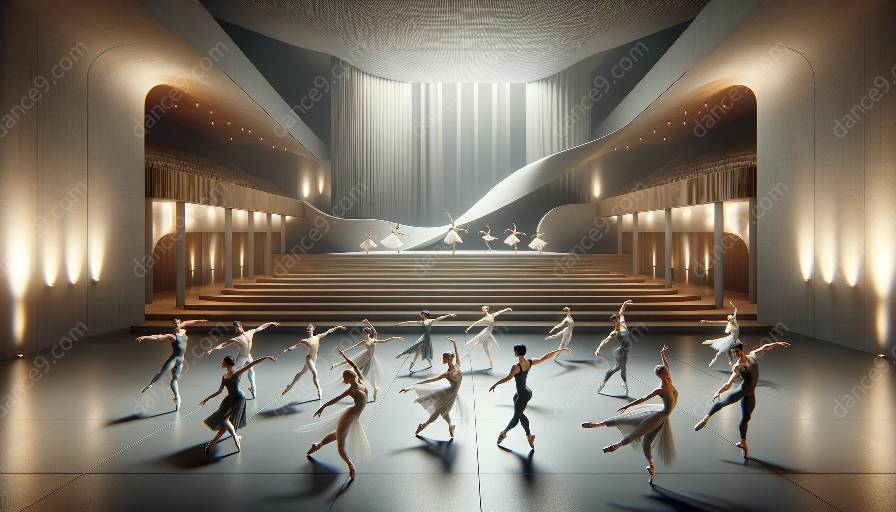Neo-classical ballet is an enchanting and timeless art form that has left an indelible mark on the world of performing arts. By exploring the history, theory, and impact of neo-classical ballet, we can gain a deeper appreciation for the elegance, grace, and storytelling capabilities of this beautiful dance form.
The History of Neo-Classical Ballet
The roots of neo-classical ballet can be traced back to the early 20th century when ballet began to evolve from its classical roots. This new form of ballet was characterized by a departure from the strict rules and conventions of traditional classical ballet, allowing for more freedom of movement and expression. Influential choreographers such as George Balanchine, Serge Lifar, and Frederick Ashton played pivotal roles in shaping the neo-classical ballet movement.
Neo-classical ballet also saw a fusion of classical ballet techniques with modern dance styles, giving rise to a new and exciting form of artistic expression. This fusion allowed dancers to explore new movements and shapes, breaking away from the rigid structures of classical ballet.
The Theory of Neo-Classical Ballet
The theory behind neo-classical ballet lies in its ability to blend the technical precision of classical ballet with the emotional and expressive qualities of modern dance. This marriage of form and feeling gives neo-classical ballet its unique allure and allows dancers to convey deeper stories and emotions through movement.
The choreography in neo-classical ballet often features asymmetrical lines, unexpected gestures, and intricate partnering, challenging dancers to push the boundaries of their physical and artistic capabilities. This fusion of classical technique and innovation creates an expressive and dynamic dance form that continues to captivate audiences around the world.
Neo-Classical Ballet and Performing Arts
Neo-classical ballet has significantly influenced the performing arts, serving as a bridge between the traditions of classical ballet and the innovations of contemporary dance. Its impact can be seen in the repertoire of many ballet companies and the training of aspiring dancers.
As a genre that embraces both tradition and innovation, neo-classical ballet has expanded the boundaries of what is possible in the realm of dance. Its influence can be felt in a wide range of dance styles and has inspired countless choreographers to explore new artistic horizons.
Conclusion
Neo-classical ballet stands as a testament to the enduring beauty and relevance of classical ballet, while also embracing the spirit of innovation and creativity. Its rich history, compelling theory, and impact on the performing arts continue to make it a cherished and integral part of the dance world.
Topic
Origins and Development of Neo-Classical Ballet
View details
Key Principles of Neo-Classical Ballet Technique
View details
Neo-Classical Ballet and Classical Ballet: a Comparative Study
View details
Cultural and Historical Influences on Neo-Classical Ballet
View details
Neo-Classical Ballet and Gender Representation in Dance
View details
Neo-Classical Ballet Training Methods and Techniques
View details
Neo-Classical Ballet Companies and Their Contributions
View details
Neo-Classical Ballet and Contemporary Dance Styles
View details
Storytelling and Character Development in Neo-Classical Ballet
View details
Neo-Classical Ballet and Visual Arts Collaboration
View details
Innovations in Neo-Classical Ballet Costumes and Stage Design
View details
Neo-Classical Ballet: Collaboration Between Dancers, Choreographers, and Composers
View details
Neo-Classical Ballet and Contemporary Dance Scene
View details
Impact of Neo-Classical Ballet on Training and Education of Dancers
View details
Challenges and Criticisms Facing Neo-Classical Ballet
View details
Preservation and Reinterpretation of Historical Ballet Works through Neo-Classical Ballet
View details
Contribution of Neo-Classical Ballet to Performing Arts Education and Research
View details
Understanding and Appreciation of Ballet History and Theory through Neo-Classical Ballet
View details
Future Directions and Possibilities for Neo-Classical Ballet
View details
Questions
What are the key principles of neo-classical ballet technique?
View details
How did neo-classical ballet form and evolve over time?
View details
What are the major neo-classical ballet works by renowned choreographers?
View details
What role does neoclassical ballet play in contemporary dance performances?
View details
How does neo-classical ballet differ from classical ballet in terms of movement and style?
View details
What are the key characteristics of neo-classical ballet music and its influence on choreography?
View details
How has the teaching and practice of neo-classical ballet changed in recent years?
View details
What impact did neo-classical ballet have on the development of ballet as an art form?
View details
What are the major neo-classical ballet training methods and techniques used by professional dancers?
View details
How does neo-classical ballet challenge traditional gender roles in dance performances?
View details
What are the cultural and historical influences on the development of neo-classical ballet?
View details
What are the major themes and narratives commonly explored in neo-classical ballet productions?
View details
How does neo-classical ballet incorporate elements of storytelling and character development in its performances?
View details
What are the significant differences between neo-classical ballet and contemporary ballet styles?
View details
What are the major neo-classical ballet companies and their contributions to the art form?
View details
What impact does neo-classical ballet have on the overall aesthetic and visual presentation of dance performances?
View details
How does neo-classical ballet engage with other art forms, such as visual arts, music, and literature?
View details
What are the major innovations and developments in neo-classical ballet costumes and stage design?
View details
What are the roles of neo-classical ballet dancers in collaborating with choreographers and composers to create new works?
View details
What influence has neo-classical ballet had on the training and education of aspiring professional dancers?
View details
What are the major criticisms and challenges facing neo-classical ballet in the contemporary dance scene?
View details
How does neo-classical ballet contribute to the preservation and reinterpretation of historical ballet works?
View details
What are the major contributions of neo-classical ballet to the broader field of performing arts education and research?
View details
How does neo-classical ballet contribute to the understanding and appreciation of ballet history and theory?
View details
What are the major future directions and possibilities for neo-classical ballet as an art form?
View details





























